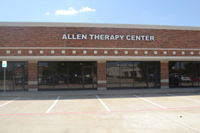An anterior cruciate ligament (ACL) rupture or tear is a common injury among athletes. However, even non-athletes can sustain an ACL tear during a sudden twisting or pivoting motion. The ACL is one of the major ligaments in the knee, and its injury may require surgery to repair or replace it. After ACL surgery, physical therapy is crucial for a successful recovery. In this blog post, we will discuss what patients can expect in physical therapy after ACL reconstruction.
1. First Visit
At the first physical therapy session, the physical therapist will evaluate the patient’s medical history, previous level of activity, and surgery information. They will assess the patient’s range of motion, swelling, strength, and stability. Based on the evaluation, the therapist will set realistic goals for the patient and develop a personalized rehabilitation plan. The goals may include reducing pain and swelling, improving movement, and returning to daily activities.
2. Early Rehabilitation
The initial phase of ACL physical therapy aims to reduce swelling and increase range of motion gradually. The physical therapist may use modalities like ice and compression to control inflammation, and manual treatments like massage and stretching to restore flexibility. The focus is on protecting the surgical site, regaining strength, and mobilizing the knee joint.
3. Later Rehabilitation
As the patient progresses into the later phases of rehabilitation, the focus will shift to strengthening exercises and functional training. The physical therapist will introduce various exercises to increase muscle strength, improve balance, and restore the knee’s stability. The therapist may also simulate different sports-specific movements to prepare the patient for a safe return to their respective sport.
4. Patient Education
Education is an essential component of ACL physical therapy. The physical therapist will teach the patient how to perform exercises correctly, manage pain, and prevent reinjury. They will also provide guidance on the use of assistive devices, like crutches, and proper body mechanics during daily activities. The therapist may also advise the patient on diet and nutrition to support healing and recovery.
5. Follow-up Care
After completing the physical therapy sessions, the patient may still need to practice their exercises at home to maintain their progress. The physical therapist will provide a detailed home exercise program that the patient should continue to follow. The therapist may also schedule periodic follow-up visits to monitor the patient’s progress and adjust the therapy plan accordingly.
Physical therapy after ACL reconstruction is a vital step for a full recovery. The rehab program aims to control inflammation, regain motion, and improve strength and function. The physical therapist plays a crucial role in leading the patient through the different phases of rehabilitation, providing guidance, and monitoring progress. With the dedication and commitment of both the patient and the therapist, successful recovery and return to everyday activities, and sporting pursuits, is achievable.
Call Allen Physical Therapy Center
Contact Us Directly: 972-359-1288
 1223 McDermott Suite 50, Allen, TX 75013
1223 McDermott Suite 50, Allen, TX 75013
Phone: 972-359-1288
Fax: 469-281-2458
Hours: Monday-Thursday 7 a.m. – 7 p.m.
Friday 7 a.m. – 5 p.m.
